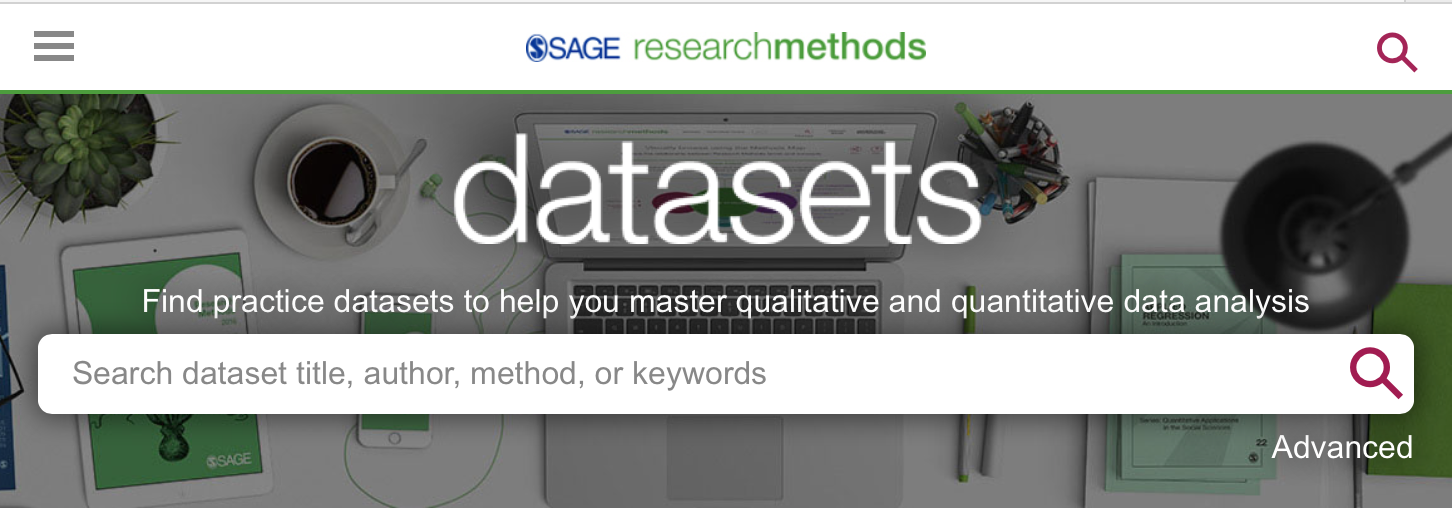Ready... set... analyze! Datasets designed for research methods classes
Published by Mark BodnarThanks to support from KEY, SFU's Big Data Initiative, SFU researchers now have access to a collection of practice datasets optimized for use in classroom exercises or in exam papers: Sage Research Methods Datasets.
This collection of teaching datasets can be used to support the teaching and independent learning of quantitative and qualitative analytical methods common in the social sciences. These are datasets taken from real research projects, but edited and cleaned for teaching purposes -- saving you hours sourcing and cleaning data yourself. Each dataset is accompanied by a short, clear narrative description of the data and easy-to-follow instructions on how to apply the research method.

For example, the Testing for Heteroscedasticity and the Canadian Fuel Consumption Report (2015): Highway Fuel Consumption and Engine Size in Canada dataset "... introduces readers to testing for heteroscedasticity following a linear regression analysis." After reading the guide and experimenting with the downloadable data, you should know...
- What types of model require testing for heteroscedasticity.
- How heteroscedasticity impacts the results of a regression model.
- How to detect heteroscedasticity graphically and statistically.
- How to report the results of attempting to detect heteroscedasticity.
Here are a couple more samples to whet your appetite:
Boxplots and the UK Living Cost and Food Survey (2010): Household Income and Accommodation Tenure
"... introduces readers to boxplots. Boxplots are a useful way of exploring continuous data, especially as a preliminary step before more sophisticated analyses. Boxplots, or, as they are sometimes called, box-whisker diagrams, allow the researcher to better understand the distribution of his or her variables either independently or across groups. As you will also learn, boxplots are an excellent method for identifying outlying cases within the data."
Doing the Wilcoxon Signed-Rank Test With the World Development Indicators (2006–2012) in SPSS
"... introduces readers to the Wilcoxon signed-rank test. This technique allows researchers to test whether there is a difference between two related groups of measurements. Hence, it is commonly used to study any change in the subjects from one time point to another, or to compare the effects of different treatments/conditions."
But wait, there's more! The Sage folks don't just give you the data and a few tips... they provide deep details on the assumptions and calculations required, then they connect you to related content via our broader Sage Research Methods Online (SRMO) database. Once you click on a dataset title, look for a link to the Methods Map to connect through to SRMO articles and books on the same research method.
Questions? Send them my way!
-- MarkB
------------------
Mark Bodnar
Economics & Business Librarian
mbodnar@sfu.ca



